What's New
Displaying results 1811 - 1820 of 4914

Resource | Presentations,
Hepatitis A is a notifiable disease under the Prevention and Control of Disease Ordinance (Cap 599) of the Hong Kong laws. An unusual increase in the number of hepatitis A among attendees of Integrated Treatment Centre (ITC) of Department of Health (DH), who were HIV positive men who have sex with men (MSM), were recorded by CHP recently.
Retrospective analysis of laboratory information revealed that the virus from most of the cases reported since September 2015 were shown to be identical to either one of two genetically distinguishable groups within genotype 1A (4 and 8 cases, 1 case pending). Investigation is ongoing to study if the outbreak has spread to other MSM in the community.
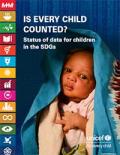
Resource | Publications,
The 2030 Agenda for Sustainable Development charts an ambitious course for the coming decade and beyond. Reaching further than its precursor, the Millennium Development Goals, the Agenda brings together the social, economic and environmental dimensions of development. The Sustainable Development Goals (SDGs) are a clarion call for a more equitable future, and at their core is a commitment to leave no one behind. The SDGs can only deliver on the promise of equity if the world knows which children and families are thriving and which are being left behind – both at the launch of the Agenda and throughout its implementation.
This report considers both the implications of the 2030 Agenda for children and the data required to monitor the situation of children within the SDG framework.
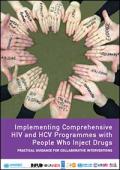
Resource | Guidelines,
Previously published United Nations (UN) guidance documents describe the content of effective HIV and HCV prevention interventions for people who inject drugs, in the context of harm reduction and HIV prevention for key populations. UN guidance is also grounded in an approach expressed in the critical enablers described in Table 2—strategies, activities and approaches to increase the accessibility, acceptability, coverage, quality and uptake of interventions and services for key populations. This tool offers practical advice on how to implement these programmes and these approaches for and with people who inject drugs, across the full continuum of HIV and HCV prevention, diagnosis, treatment and care, aligned with UN guidance. It contains examples of good practice from around the world that may support efforts in planning programmes and services, and describes issues that should be considered and how to overcome challenges.
This tool does not seek to ignore the complex policy and legislative environment around drugs and
injecting drug use in most countries, nor the need for advocacy to confront the stigma, discrimination and human-rights violations faced by people who inject drugs.

Resource | Tools,
This Operational Manual has been prepared for easy reference of the staff at sentinel sites and provides the guidance on operational as well as technical aspects, for efficient implementation of HIV Sentinel Surveillance (HSS). It details the roles and responsibilities of the staff, recruitment process, and documentation, including instructions on filling of data forms and blood specimen management. The site in-charge should be aware of the entire set of functions and responsibilities of all the designated staff involved in surveillance activities at the sentinel site. This ensures better coordination and uninterrupted implementation of surveillance activities at the sentinel site.
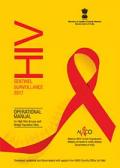
Resource | Tools,
This manual is in series of rounds of operational manual that is related before each round of surveillance with an objective to simplify the processes and to make them user-friendly. The manual, published separately for (antenatal clinic sites) ANC and (high-risk groups) HRG & bridge population sites, describes the eligibility criteria and sampling process to be followed for surveillance among respective groups. The steps and precautions to be taken while collecting, drying, packing and transporting the specimens are also outlined in this manual and explained with the help of graphics wherever necessary.
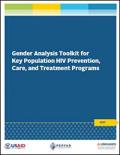
Resource | Tools,
A gender analysis can be used to increase the effectiveness of HIV prevention, care, and treatment activities for key populations by identifying the specific gender issues in a given context, describing how they could affect a program’s goals, and identifying ways to work around or transform gender-related barriers and leverage gender-related opportunities. For USAID-funded projects, USAID requires that a gender analysis be conducted during the project design phase to inform a project’s design and implementation; it is the first step in the gender integration process.
The toolkit contains all the information needed to conduct a comprehensive gender analysis. However, in recognition that programs may want to conduct a more streamlined analysis, key steps can be found on pages 7-16. Each step can be streamlined based on time, resources, and information available for a gender analysis.

Resource | Publications,
Youth Voices Count (YVC) is a regional community network of sexual and gender minority youth in Asia and the Pacific. Founded in 2010 by 40 young gay men, transgender women, and other men who have sex with men, from 19 countries, YVC addresses issues related to HIV, health, and human rights through capacity building, advocacy and community mobilization. Led by a dynamic group of young persons from the region, YVC brings together community leaders to address stigma and discrimination, including self-stigma, and to leverage the power of young people in regional and international gatherings, including its most recent involvement with UNAIDS High Level Meeting on HIV held in 2016 in New York, USA.
Youth Voices Count envisions a society in which young people of [all] sexual and gender diversity including [those that identify as] lesbian, gay, bisexual, transgender and queer identities lead safe and free lives with equal opportunity to achieve their full potential and well-being.

Resource | Publications,
East and North-East Asia (ENEA), as one of the most dynamic, innovative and fast-developing areas of the world, has made remarkable progress over the past two decades − with annual GDP growth higher than that in the Asia-Pacific region and the rest of world. The ENEA subregion is well advanced in achieving the Millennium Development Goals. Yet many challenges remain. The ENEA subregion still has a large number of people living in poverty and a large disparity in income among countries, with Japan at one end of the spectrum and the Democratic People's Republic of Korea at the other. There has been no fundamental trend in reversing environmental and resource losses, or in reducing the growth of greenhouse gas (GHG) emissions. The subregion's resource-intensive economic growth has led to large increases in the demand for materials and energy.
This publication highlights challenges and priorities of the East and North-East Asian subregion in achieving the Sustainable Development Goals.

Resource | Publications,
The Asia-Pacific Sustainable Development Goals Outlook report aims to develop a shared understanding of the opportunities and challenges confronting the region. This report provides a goal by goal snapshot of where we stand, including bright spots, hot spots and emerging issues for our region as we implement the 2030 Agenda for Sustainable Development.
Limitations of data and the sheer complexity of the issues addressed by the 2030 Agenda have constrained this effort. Nonetheless, a picture emerges of a region that has, on the aggregate level, achieved several of the Millennium Development Goals but in which too many of its people are still not benefiting from growth and progress and are increasingly vulnerable to economic, social and environmental risks. In 2013, 400 million people lived on less than $1.90 per day (in 2011 PPP). With business-as-usual practices, we may not realize the brighter future that global leaders in 2015 committed to reach in 15 years’ time.
This outlook report provides a starting point for dialogue and will support follow-up and review at the regional level. It can also help governments and other stakeholders to reach much-needed social and political consensus and focus on the gaps and priorities for moving forward. It also focuses attention on the opportunities for bringing the Asia-Pacific region together in action on cross-cutting issues and in support of the countries that face multiple challenges.
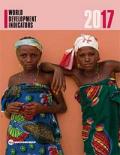
Resource | Publications,
This edition marks the 40th year of World Development Indicators, which was first published as an annex to the 1978 World Development Report. As the world has undergone many changes, World Development Indicators has grown and adapted alongside it. Country coverage and the range of indicators have expanded: The online database (http://data.worldbank.org) now includes more than 1,400 indicators for more than 220 economies, with some data series extending back more than 50 years.
This year the World Development Indicators database has been improved to include more indicators that cover the Sustainable Development Goals and more data disaggregated by sex, age, wealth quintile, and urban or rural location. New data include access to clean cooking fuels and the number of industrial design applications registered globally. Data on GDP in current prices and inflation now account for breaks in time-series.





